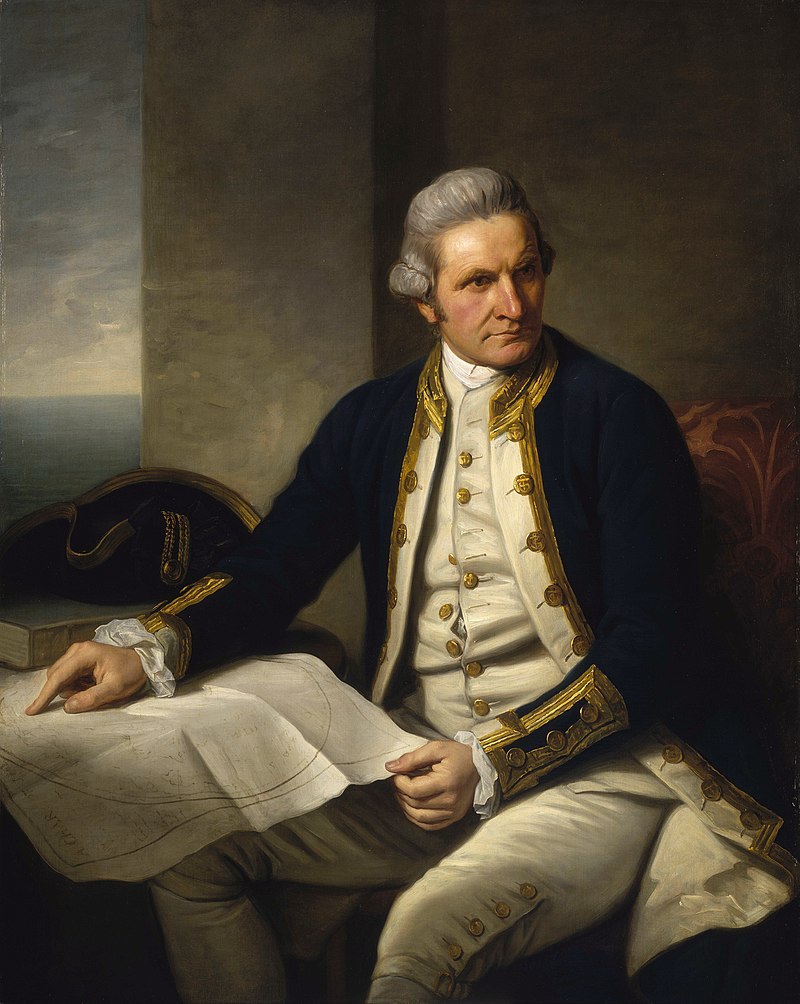 |
| Captain James Cook. We learned in school that he was the first European to circumnavigate New Zealand, but what we didn't learn is that he was also one of the first people in the world to brew beer from malt extract. |
Malt extract is made by taking the sugar extracted from malt during the mashing process and drying it, until it becomes either a syrup or a powder. Some brands also contain hop extracts, so that the brewer doesn't need to purchase hops separately. It is of course primarily used to make beer, but it is also used in cooking, and when I was a kid malt extract (without hops) was sold as a health food. It was the '80s, when people were obsessed with health but somehow you could still get away with marketing concentrated sugar syrup as a health product.
In fact, malt extract does contain vitamins and minerals. The British Navy was experimenting with malt extracts as early as 1772, trying to create an easily transportable concentrated malt to supplement sailors' diets and help prevent scurvy. These first malt extracts were not a great success. When Captain Cook took some on his second voyage to the Far East (1772 - 1775), his crew found that the beer they made with it had an unpleasant burnt taste. However, it apparently improved when they added spruce leaves and molasses. Eventually, the British Navy discovered that lemon juice was a more effective and less expensive way of preventing scurvy.
The trouble with early malt extracts was it took so long to boil away the excess water that by the time manufacturers produced a concentrated extract, the malt was burnt and unpalatable. Technological advances in the late 19th century made it possible to boil the malt in a vacuum, which reduced the boiling time and created a better-tasting product. At this stage malt extract was primarily a dietary supplement, but from the 1880s onwards British breweries began using it as a cheaper alternative to all-grain brewing.
The birth of modern extract brewing
Ironically, the glorious golden age of home brewing products we now enjoy began as a direct result of prohibition. The kind of malt extract we're familiar with today, designed for the home brew market and often containing hops, was developed in the 1920s. When the Volstead Act came into force American breweries could no longer legally produce beer, so they had to adapt, and one of the ways they did this was to produce malt extract instead. Of course the extract could not be marketed as a home brewing product, so it was promoted as a baking ingredient. This 1928 advertisement insists that Zobelein's Bohemian hop flavoured malt extract is a food product for use in cooking and baking. Not for brewing at all. Honestly.
 |
| Image from KCET.org |
Customers knew perfectly well what the extract was really intended for. Once you have malt syrup with hop flavouring conveniently added, you can make beer by simply adding water and yeast, and this clever innovation ensured that absolutely anybody could make their own beer.
Prohibition homebrew recipes tended to be a simple mixture of malt syrup, water, yeast, and sometimes corn sugar. I'm hesitant to try one of these recipes because the results were often pretty horrible. 1920s malt extract was not as good as the extracts available today, and many Prohibition-era recipes didn't use it very well.
Malt extracts for craft brewing
The United States beer industry took a long time to recover from Prohibition. Beer was produced commercially as soon as it became legal again, but the range of beers on offer was sharply reduced. Beer enthusiasts who wanted styles that were no longer available were forced to make their own.
In New Zealand and Australia the primary reason for making home brew has historically been to save money, but like their American counterparts Antipodean brewers were also interested in making styles of beer that weren't available commercially. Until recently the New Zealand and Australian commercial beer industries were decidedly basic, and anything more exotic than a lager or IPA could be difficult to get hold of.
Malt extract manufacturers responded to the increasingly sophisticated home brew market by developing more sophisticated products. There is now a vast range of malt extract types available, and to some extent this has been enabled by the internet. Thanks to Google it is easy to find recipes for any style of beer you like, as well as plenty of tips to help home brewers achieve good results whether they're using grain, malt extract, or a combination of both.
To paraphrase Leibniz, everything that is marketable demands to exist.
I knew nothing of the re-branding of malt extract during Prohibition as a cooking and baking aid, let alone that you can use it to make beer. Thanks for posting this!
ReplyDeleteYou're welcome! Another suggested use for it was as a topping for ice cream, which breweries like Anheuser-Busch also produced during Prohibition, though I'm not convinced hop flavoured ice cream topping would have been all that nice.
Delete